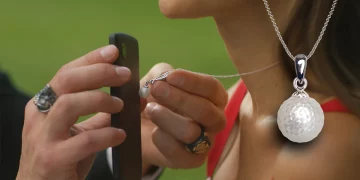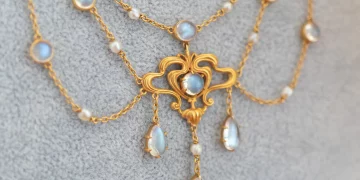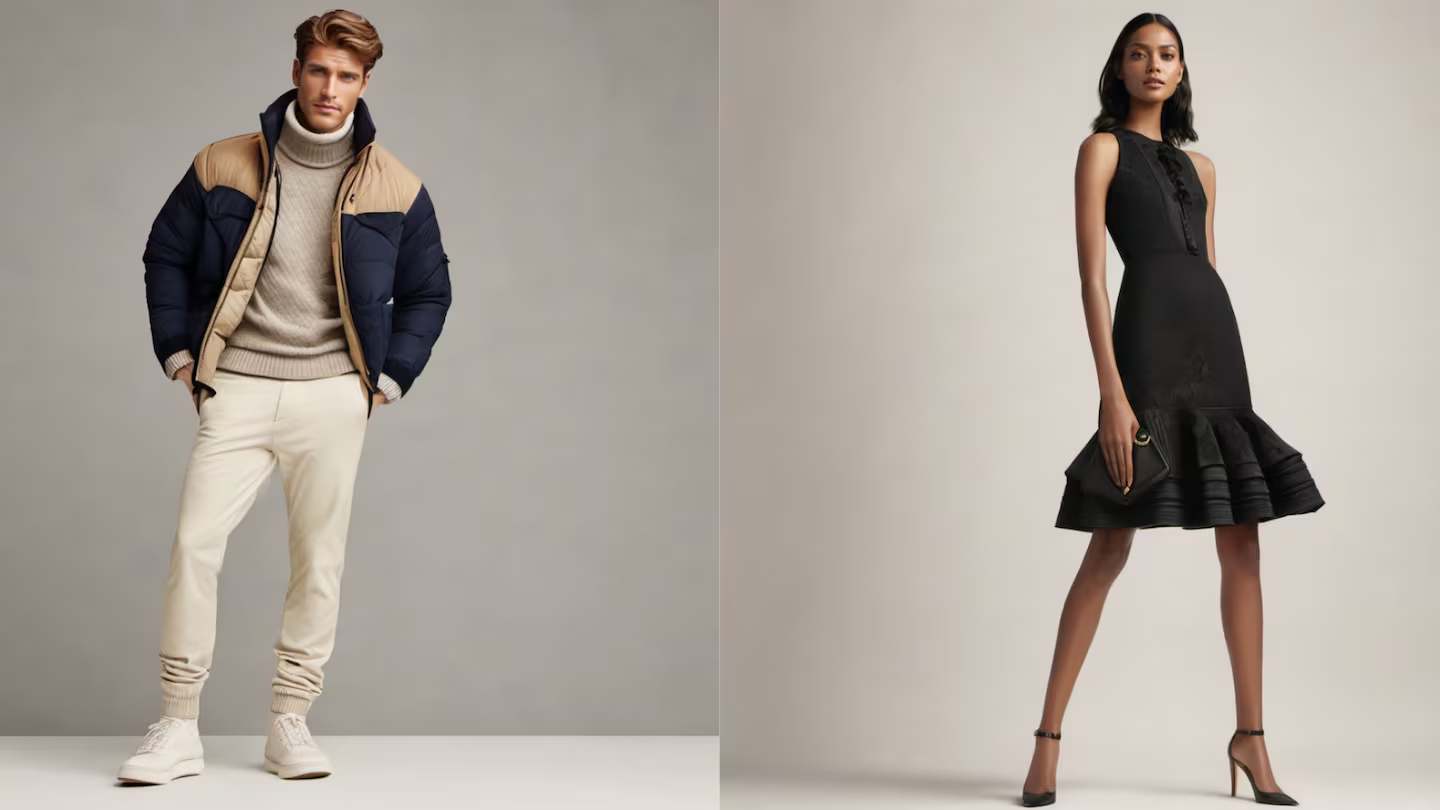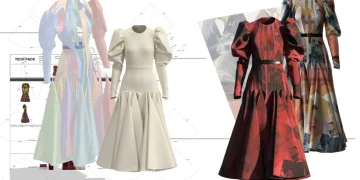In the ever-evolving world of fashion, trends tend to be cyclical, with the past often serving as a rich source of inspiration for the present. This holds true for the world of jewelry design as well, where the retro trend seems to be experiencing a grand resurgence. Vintage-inspired pieces are making their way back into the spotlight, as contemporary consumers rediscover the timeless elegance and craftsmanship of bygone eras.
From Art Deco to Victorian influences, many classic designs are finding new life in modern collections. Modern jewelry designers are taking inspiration from past decades, blending nostalgic aesthetics with cutting-edge techniques and materials. This fusion of old-world charm and contemporary sensibility is not only creating pieces that resonate with luxury and history, but also allowing vintage styles to evolve and adapt for today’s fashion-forward consumer.
In this article, we will explore whether the vintage jewelry trend is truly upon us, and which classic designs are being reimagined in today’s market. We will delve into the specific design movements that are making a comeback and how they are being modernized to suit the tastes of contemporary consumers.
1. The Rise of Retro and Vintage Jewelry: Why Now?
The increasing popularity of vintage jewelry is not an isolated phenomenon; it’s part of a broader cultural trend where consumers are increasingly drawn to authenticity, quality, and heritage. With a world dominated by fast fashion and mass production, people are beginning to turn to the past for pieces that tell a story, have lasting value, and feel unique in an age of overconsumption.
1.1 The Nostalgia Factor: A Return to a Simpler Time
Nostalgia is a powerful emotion, and the allure of vintage jewelry lies in its ability to evoke feelings of romance, elegance, and history. Consumers, particularly younger generations, are finding comfort in pieces that connect them to a simpler, more elegant era. The rise of platforms like Instagram and Pinterest has also helped fuel the interest in retro designs, where old jewelry trends are being rediscovered and reimagined by a global audience.
- Vintage-inspired pieces often feature intricate details, handcraftsmanship, and materials that stand in stark contrast to the mass-produced designs of today. Many people are drawn to the romanticism and refinement that vintage jewelry encapsulates, making it a great way to stand out from the crowd.
- The appeal also lies in the uniqueness of these pieces—vintage jewelry is often produced in limited quantities, making it feel more exclusive and personalized than contemporary designs.
1.2 Sustainability and Ethical Appeal
In the current age of sustainability and conscious consumerism, vintage jewelry offers a sustainable alternative to newly mined materials. By purchasing pre-loved or recycled pieces, consumers are helping to reduce the demand for mining and the environmental toll it takes. Many buyers are choosing to invest in antique and vintage jewelry because it represents a greener choice while still offering the luxury and craftsmanship they desire.
- Recycled gold and antique gemstones are becoming key selling points for modern jewelers, as more consumers are becoming aware of the environmental impact of their purchases.
- Designers are also embracing the vintage ethos by reworking and upcycling older jewelry into new creations, preserving the value and historical charm of antique pieces while infusing them with modern flair.
2. Classic Design Movements Making a Comeback
Several vintage jewelry styles have made a remarkable return to the spotlight. Some styles are being completely reinterpreted, while others are being embraced in their original form. Below, we highlight a few iconic jewelry design movements that are experiencing a resurgence.
2.1 Art Deco: Glamour, Symmetry, and Bold Geometric Shapes
The Art Deco movement, which flourished in the 1920s and 1930s, is one of the most celebrated design eras in jewelry history. Known for its bold geometric shapes, clean lines, and luxurious materials, Art Deco jewelry was a reflection of the modernity and progressive spirit of the time. Today, Art Deco designs are enjoying a revival, with many modern jewelers tapping into its luxurious and timeless appeal.
- Geometric patterns, such as zigzags, chevrons, and rectangular shapes, are being used in rings, necklaces, and earrings. This sleek, symmetrical design language is a favorite among those who love bold, structured jewelry with a sense of refinement and glamour.
- The use of platinum, diamonds, emeralds, and onyx is also common in Art Deco-inspired jewelry. Modern jewelers, such as Cartier and Van Cleef & Arpels, are designing new collections that pay homage to this iconic era while incorporating updated elements like colored gemstones and unique cuts.
2.2 Victorian: Romanticism and Sentimental Beauty
The Victorian era (1837-1901) was a time of great change in the world of jewelry, and it remains an important influence today. Known for its romantic and sentimental designs, Victorian jewelry was often used to communicate emotions and commemorate significant life events, such as love, mourning, and family.
- Lockets, cameos, intricate filigree, and seed pearls are all hallmarks of Victorian jewelry, and they’re making a significant comeback in the modern market.
- Modern designers are updating these classic motifs by reinterpreting them in contemporary styles—incorporating vintage lockets with modern gems or creating modern mourning jewelry that celebrates life and memory in a more abstract form.
2.3 Retro: Bold, Playful, and Colorful
The Retro era, which began in the 1940s and continued into the 1950s, was characterized by bold, exaggerated designs and a playful approach to color. This period, influenced by World War II and the post-war exuberance, saw the rise of chunky gold designs, big statement rings, and the use of colorful gemstones such as emeralds, rubies, and turquoise.
- Large, sculptural pieces, such as wide gold bracelets, oversized brooches, and dramatic earrings, are back in vogue. These pieces are often set with brightly colored stones, giving them a bold, vibrant aesthetic.
- Modern reinterpretations of Retro jewelry use contemporary materials like rose gold or 3D-printed elements, which adds an innovative twist while staying true to the bold design language of the era.
2.4 Art Nouveau: Whimsical and Organic Designs
The Art Nouveau period (1890-1910) was known for its whimsical, fluid designs that were inspired by nature, with motifs such as flowers, leaves, insects, and curving lines. The work of René Lalique, Georges Fouquet, and Alphonse Mucha exemplified the intricate craftsmanship and artistic spirit of the time.
- Nature-inspired motifs, such as dragonflies, butterflies, and floral elements, are being reintroduced in modern jewelry collections. Designers are combining delicate enamelwork, iridescent gemstones, and handcrafted details to create whimsical, nature-inspired pieces that channel the ethereal quality of Art Nouveau.
- Curved, flowing lines are incorporated into modern earrings and necklaces, giving them a soft, organic feel that contrasts with more structured, geometric styles.
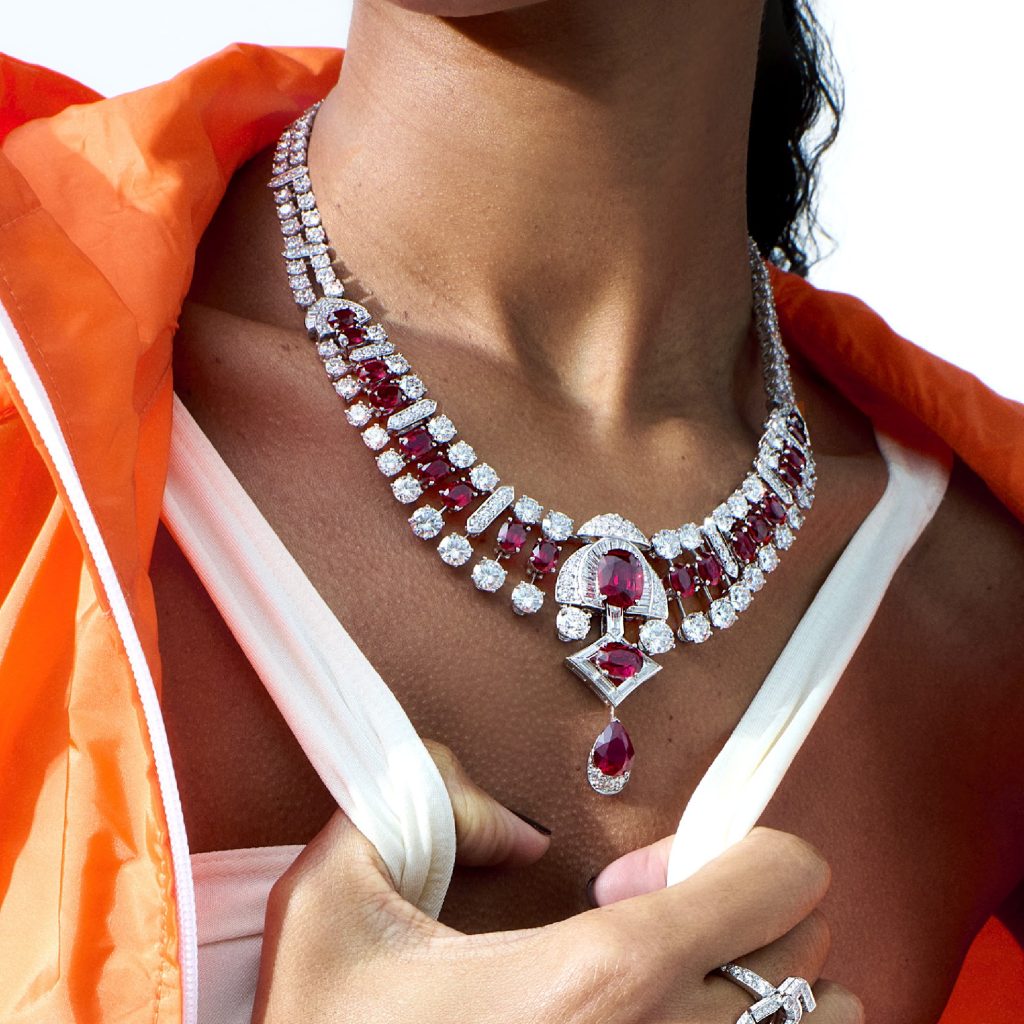
3. How Modern Designers Are Reinterpreting Vintage Jewelry
While the allure of classic designs is undeniable, modern designers are adding fresh twists to ensure that vintage-inspired jewelry resonates with today’s consumers. Here are a few ways that classic designs are being modernized for the 2020s.
3.1 Mixing Eras for a Contemporary Twist
One of the most exciting aspects of the current vintage jewelry trend is how designers are blending different design influences from multiple eras. For example, they might combine Victorian-inspired lockets with Art Deco-style gemstones, or mix Retro-era chunky gold rings with minimalist, modern settings.
- The use of mixed metals (rose gold, yellow gold, platinum) and a combination of old and new gemstones creates an eclectic, contemporary look that appeals to a wide range of tastes.
3.2 Integrating Modern Technology with Vintage Craftsmanship
Some jewelers are embracing new technologies—like 3D printing, CAD design, and laser engraving—to replicate the intricate craftsmanship of vintage jewelry in a more efficient and accessible way. This allows designers to create highly detailed and unique pieces that still honor the traditional artistry of older styles.
- CAD technology also allows for greater personalization, enabling consumers to design their own vintage-inspired pieces that incorporate elements from different design periods.
3.3 Embracing Sustainability and Recycled Materials
Many modern designers are incorporating recycled gold and conflict-free gemstones into their vintage-inspired designs, aligning with the growing demand for sustainable luxury. This commitment to ethical sourcing helps modernize the classic designs without sacrificing environmental responsibility.
Conclusion: The Enduring Allure of Vintage Jewelry
The retro and vintage jewelry trend is far from a fleeting trend. The timeless beauty, intricate craftsmanship, and sentimental value of classic designs ensure that vintage jewelry will continue to capture the hearts of consumers for years to come. By combining traditional techniques with modern sensibilities, designers are ensuring that these pieces remain relevant and exciting to a new generation of jewelry lovers.
Whether you’re drawn to the elegance of Art Deco, the romanticism of Victorian designs, or the boldness of Retro pieces, one thing is clear: the world of vintage-inspired jewelry is alive and well—and it’s here to stay.




